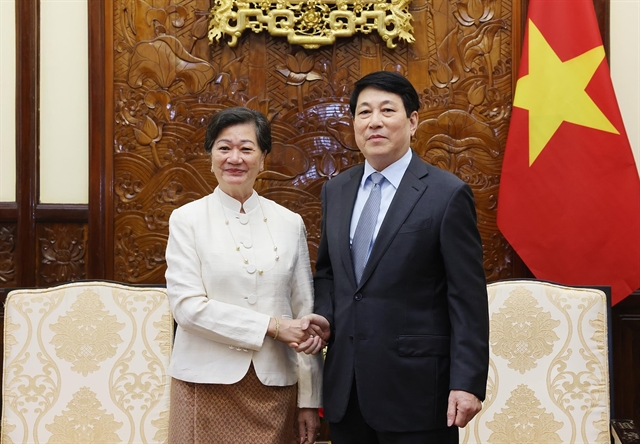 Society
Society

 |
| Hanoians drive along a city road amid smog on a day with poor air quality.— VNA/VNS Photo Hoàng Hiếu |
HÀ NỘI — Hà Nội authorities have set a target of eradicating inner-city air pollution by 2035, with low-emission zones planned as part of the effort to achieve this goal.
The target was outlined under the draft Political Report for the 18th Congress of the city’s Party Committee.
The city also plans to revive the capital’s iconic waterways, including the Tô Lịch, Kim Ngưu, Lừ and Sét rivers.
Environmental remediation will focus on the rivers as well as the Nhuệ-Đáy and Cầu Bây-Bắc Hưng Hải river basins.
City officials also plan to focus on waste and wastewater treatment through the development of sewage collection systems and new treatment plants in Kiến Hưng, Sơn Tây and Yên Sở, aiming to improve both ecological balance and public sanitation.
Priority will be given to investments in wastewater and solid waste treatment, with a vision of building a green, clean and civilised capital.
New parks will be created with minimal concrete use, along with the development of 'green city' models and urban forests.
The draft report also proposes a comprehensive strategic programme for environmental protection and green development, with a long-term outlook of at least 15 to 20 years.
The city will also work to establish mechanisms and resources to relocate polluting facilities, hospitals and schools from the inner city, in line with urban planning regulations.
A capital with a distinct identity
The draft outlines Hà Nội’s ambition to become a developed, modern and culturally distinctive capital city by 2045, one that is globally integrated, with a high quality of life and a per capita GRDP exceeding US$36,000.
The city aims to become an economic, cultural and social centre representative of the nation, reaching a level of development on par with major capitals in the region and the world.
Authorities hope it will rank among the world’s top 100 cities in terms of innovation.
By 2030, the city’s Party Committee and political system aim to become a model of integrity, unity and strength, with a cadre of highly qualified, ethical, dynamic and innovative officials capable of meeting development demands.
The city’s development will be anchored on five pillars: culture and people; three key transformations (green transition, digital transformation and circular economy); modern, well-connected infrastructure; a digital economy and smart urban governance; and scientific research, technology and innovation.
Strategic solutions
To realise its goals during the next five years, Hà Nội has identified five priority areas.
One is transportation, with a focus on regional connectivity and an extended economic development network.
The city will develop a rapid, far-reaching transport system radiating from the centre to outlying districts to ease congestion.
Plans also include expanding and upgrading Nội Bài International Airport and bringing Gia Lâm and Hòa Lạc airports into dual civil–military use.
The city will complete all seven ring roads, finishing Ring Road 4 before 2027 and beginning construction of Ring Road 5 in 2027.
City authorities also hope to complete the northern section of Ring Road 3 and the connector route to Gia Bình Airport in the next few years.
Meanwhile, the Red River corridor is being positioned as a new development axis.
The city has drawn up a schedule to build seven new bridges spanning the river: Tứ Liên, Trần Hưng Đạo, Thượng Cát, Hồng Hà, Mễ Sở, Ngọc Hồi and Vân Phúc.
Other priority areas include culture, healthcare and education, as well as the development of infrastructure for IT, digital industries and biotechnology.
The city also aims to attract investment in high-tech zones and address obstacles to expedite delayed projects. — VNS